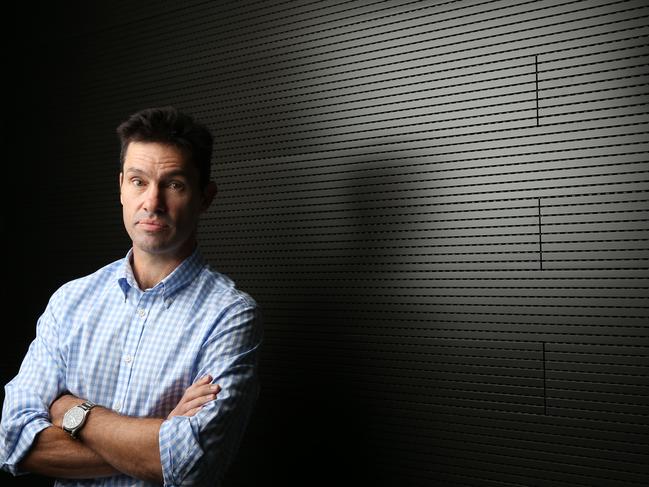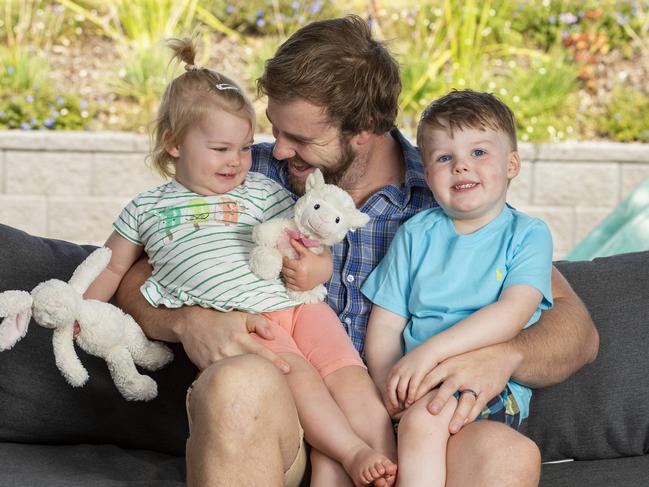Wanted: 20,000 Aussies to take part in the world’s largest genetic study of skin cancer
The world’s largest genetic study of skin cancer has been launched and Australians with or without skin cancer are wanted to take part. This is how you can sign up.
QLD News
Don't miss out on the headlines from QLD News. Followed categories will be added to My News.
QUEENSLAND researchers have launched the world’s largest genetic study of skin cancer and are seeking more than 20,000 Australians to take part.
Australia has the highest rates of skin cancer in the world, with more than 400,000 people treated for all forms of the disease annually, including basal cell and squamous cell carcinomas, melanoma and the rare, but extremely deadly, Merkel cell carcinomas.
QIMR Berghofer Medical Research Institute scientist David Whiteman said the genetic analysis formed part of the groundbreaking Qskin study of more than 44,000 Queenslanders launched about a decade ago.
AUSTRALIA ONCE AGAIN MELANOMA CAPITAL OF THE WORLD
ONLINE MELANOMA TEST PREDICTS AUTHOR’S CANCER
Qskin has already resulted in the development of an online risk prediction test for melanoma, which is available for public use.
Professor Whiteman said QIMR Berghofer researchers had collected genetic data from more than 18,000 Qskin participants and wanted to supercharge the study with DNA from more Australians.
“Genetic studies need very large numbers of participants to have enough statistical power to find the important genes,” he said. “The analogy I give is it’s a bit like needing a bigger telescope to find smaller stars.
“We need a bigger sample to find the smaller size effects from genes that are only weakly associated with skin cancers and that might still be important. So, we’re trying to increase the size of our lens.”

Professor Whiteman, the head of QIMR Berghofer’s cancer control group, said previous genetic studies of skin cancer had uncovered about 20 genes linked to melanoma and about 40 for squamous cell and basal cell carcinomas.
“There appear to be some genes that are exclusively for squamous cell carcinomas and some that are exclusive for basal cell carcinomas,” he said. “We need this bigger genetic sample now to be able to tease apart different types of skin cancer more clearly and to be able to analyse genes specifically for each kind of skin cancer.
“We need to understand what those genes are and what those genes do, how they work and how they change your skin cancer risk.”
Professor Whiteman said one of the aims of the research would be to add genetic data to their risk prediction tool, which at the moment relies on self-reported information, such as hair and eye colour, whether skin burns or tans easily when out in the sun and whether or not the skin freckles.
He said the scientists were seeking adult Australians to provide a saliva sample and stressed it was important for people with and without a family history of skin cancer to take part.
“We also want to find the protective genes that reduce the risk of these cancers,” Professor Whiteman said.
By understanding more about the genes involved in skin cancer, the hope is that it will lead to better treatments.
Young Brisbane father of two Adam Robinson is taking part in the study
Having a family history of skin cancer, the 32-year-old Dad to Cian, 3, and Ailish, 18 months, said he wanted to make sure he protected them from the disease.

“It reinforces the importance that every time they’re outdoors, we definitely need to get some sunscreen on them and put hats on,” Mr Robinson said. “It’ll stop any complacency when you know that the risk is high.”
Professor Whiteman said people from throughout Australia could take part in the study, even those living in remote rural areas.
“We can post a kit out to you,” he said.
For more information or to take part in the study: www.qimrberghofer.edu.au/qskin2/


